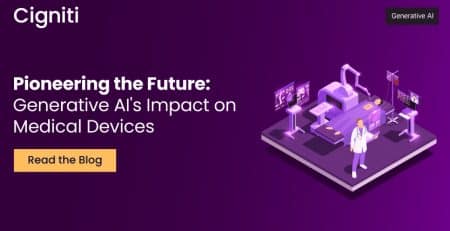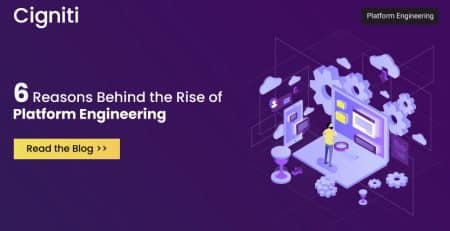6 Game-Changing Use Cases of Gen AI in Site Reliability Engineering
|
Listen on the go!
|
Today, Site Reliability Engineering (SRE) emerges as the key player in the fast-paced modern industries, where the demand for seamless software delivery collides with the need for reliability, maintaining this delicate equilibrium. It’s not merely a role; it’s a strategic position that safeguards system health while strategically mitigating the financial pitfalls associated with downtime.
A survey conducted by Catchpoint brings to light a compelling statistic – more than 54% of companies are either implementing or have already embraced SRE practices.
This data underscores the rising popularity and widespread recognition of the efficacy of SRE in today’s dynamic business landscape.
Enter the scene Large Language Models (LLMs). These advanced models are not just a technological upgrade but a potential game-changer. They promise efficiency, accuracy, and transformative capabilities to the SRE, addressing the limitations of manual processes.
Generative AI (Gen AI) emerges as a fascinating evolution within the broader AI landscape – a new wave of cognitive technologies designed to perform tasks, adapt, learn, and innovate. In the context of SRE, Gen AI is a true game-changer, offering innovative solutions beyond conventional approaches.
SRE Challenges Gen AI Can Solve
The path to optimal system reliability is not without its challenges. The manual execution of SRE tasks is time-consuming and susceptible to errors, creating a pressing need for innovation in this crucial domain.
Gen AI has the potential to tackle many challenges within SRE workflows, amplifying efficiency and fortifying system reliability. Listed below are the challenges where Gen AI can offer practical solutions:
- Automation of repetitive tasks
- Anomaly detection and monitoring complexity
- Root cause analysis
- Support for non-technical team members
- Documentation management
- Capacity planning and resource allocation
Use Cases of Gen AI in SRE
Gen AI is the SRE superhero, enhancing reliability, scalability, and efficiency from predicting and preventing incidents to dynamic capacity planning. The autonomy it brings to incident resolution, the foresight in predicting maintenance needs, and the continuous improvement through iterative learning – all contribute to a more resilient and adaptive SRE landscape.
As the reliance on SRE practices continues to surge among companies, integrating LLMs and the evolution of Gen AI promise to streamline processes and redefine the essence of SRE.
Let’s explore six compelling use cases where Gen AI is revolutionizing SRE.
-
Automated Incident Resolution
Gen AI can analyze vast datasets in real-time, identifying patterns and anomalies that might indicate potential issues. Through machine learning algorithms, it can predict and prevent incidents before they occur. In the event of an incident, Gen AI can swiftly analyze the root cause and autonomously implement corrective actions, minimizing downtime and reducing manual intervention.
-
Dynamic Capacity Planning
SREs often face the challenge of optimizing resource allocation to meet varying demands. Gen AI excels in predicting traffic patterns and resource utilization trends, enabling proactive and dynamic capacity planning. This results in better performance during peak loads cost savings through efficient resource allocation, and an overall improvement in system reliability.
-
Predictive Maintenance
Gen AI can predict potential failures and performance degradation in the IT infrastructure. Analyzing historical data and system behaviors anticipates when components might need maintenance or replacement, reducing the risk of unexpected outages. This proactive approach to maintenance enhances overall system reliability and ensures a smoother user experience.
-
Anomaly Detection and Root Cause Analysis
Leveraging advanced machine learning (ML) algorithms, Gen AI excels in detecting anomalies in system behavior. It goes beyond traditional threshold-based monitoring, identifying subtle deviations that might go unnoticed. Once an anomaly is detected, Gen AI performs a thorough root cause analysis, providing SREs with actionable insights to resolve issues swiftly and effectively.
-
Continuous Improvement through Feedback Loops
Gen AI is not static; it learns and evolves. Gen AI continuously refines its models and algorithms by incorporating feedback loops from SREs and system performance data. This iterative learning process enables the system to adapt to changing environments, improving its predictive capabilities and overall reliability.
-
Automated Documentation and Knowledge Sharing
SREs often deal with complex systems and intricate configurations. Gen AI can assist in automatically documenting system changes, incident resolutions, and best practices. This streamlines knowledge sharing within the team and ensures that critical information is readily available, reducing the learning curve for new team members and enhancing overall team efficiency.
Conclusion
In the fast-paced world of Site Reliability Engineering, Gen AI is proving to be a transformative force, offering innovative solutions to long-standing challenges. Gen AI is reshaping how SREs approach their responsibilities, from automating incident resolution to predicting system failures.
As organizations embrace this new era of AI, they will undoubtedly unlock unprecedented levels of reliability, scalability, and efficiency in their digital ecosystems. The journey towards a more resilient and adaptive SRE landscape has just begun, and Gen AI is leading the way.
At Cigniti, SRE and Gen AI converge to redefine excellence in system reliability and innovation. To know more, visit Cigniti Site Reliability Engineering.





Leave a Reply